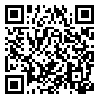Volume 1, Issue 2 (10-2018)
2018, 1(2): 0-0 |
Back to browse issues page
Ethics code: IR.MEDILAM.REC.11396.038
Download citation:
BibTeX | RIS | EndNote | Medlars | ProCite | Reference Manager | RefWorks
Send citation to:



BibTeX | RIS | EndNote | Medlars | ProCite | Reference Manager | RefWorks
Send citation to:
Nikan A, Taghinejad H, Otaghi M. Comparison the effect of tele- nursing and discharge planing on self-efficacy among patients caregivers with stroke hospitalized in governmental hospitals of Ilam and Dezful during 2016-17. Journal title 2018; 1 (2)
URL: http://newresearch.medilam.ac.ir/article-1-238-en.html
URL: http://newresearch.medilam.ac.ir/article-1-238-en.html
Department of Nursing, School of Nursing and Midwifery, Ilam University of Medical sciences, Ilam, Iran
Abstract: (2898 Views)
Background: Caregivers of patients with strok face with different challenges. Caregivers' self-efficacy is a degree of the caregiver’s mastery sense over his/her capacity to carry out his activities required by the patients.
Purpose: The present study was conducted in order to compare the effect of nurse-led telephone follow-up and discharge planing on self-efficacy among caregivers of patients suffering from stroke.
Material & Method: The present study was a quasi-experimental clinical trial. The study sample consisted of 105 caregivers of stroke patients, who were selected by a convenience sampling method and were randomly assigned into 3 groups of 35 (control group, discharge program, and telephone follow-up). The required data were collected using a demographic information questionnaire and Sherer General Self-efficacy Scale. The Nursing Telephone Nurses Group trained face-to-face for 20 minutes with an educational stroke pamphlet and followed up for four weeks (five times). In the discharge program, 40 minutes of face-to-face training, along with a manual for caring for patients with stroke, were provided to caregivers of patients. The questionnaires were completed by the caregivers before and one month after the experiment. The collected data were analyzed using SPSS 21.0 at a confidence interval of 95%.
Results: The results of the present study showed that there was no significant difference between the self-efficacy mean scores before and after the study in the control group (p=0.495). In the telephone follow-up group; however, the self-efficacy mean score before the intervention was 63.077±8.79 which increased to 68.43±7.17 after the study. In the discharge group, the self-efficacy mean score increased from 58.69±8.77 to 63.54±6.72 after the study, and these increases were statistically significant (p<0.001).
there was a significant difference among the three groups with regard to their self-efficacy mean scores before the study (p=0.043), and this difference can be attributed to the difference between the telephone follow-up group and the discharge programs (p=0.037). Also, there was a significant difference among the three groups after the study (p<0.0001), which can be attributed to the difference between the control group and the telephone follow-up group (p≤0.0001) and the telephone follow-up group and the discharge group( p=0.023). However, there was no significant difference between the control and discharge groups (p=0.086).
Purpose: The present study was conducted in order to compare the effect of nurse-led telephone follow-up and discharge planing on self-efficacy among caregivers of patients suffering from stroke.
Material & Method: The present study was a quasi-experimental clinical trial. The study sample consisted of 105 caregivers of stroke patients, who were selected by a convenience sampling method and were randomly assigned into 3 groups of 35 (control group, discharge program, and telephone follow-up). The required data were collected using a demographic information questionnaire and Sherer General Self-efficacy Scale. The Nursing Telephone Nurses Group trained face-to-face for 20 minutes with an educational stroke pamphlet and followed up for four weeks (five times). In the discharge program, 40 minutes of face-to-face training, along with a manual for caring for patients with stroke, were provided to caregivers of patients. The questionnaires were completed by the caregivers before and one month after the experiment. The collected data were analyzed using SPSS 21.0 at a confidence interval of 95%.
Results: The results of the present study showed that there was no significant difference between the self-efficacy mean scores before and after the study in the control group (p=0.495). In the telephone follow-up group; however, the self-efficacy mean score before the intervention was 63.077±8.79 which increased to 68.43±7.17 after the study. In the discharge group, the self-efficacy mean score increased from 58.69±8.77 to 63.54±6.72 after the study, and these increases were statistically significant (p<0.001).
there was a significant difference among the three groups with regard to their self-efficacy mean scores before the study (p=0.043), and this difference can be attributed to the difference between the telephone follow-up group and the discharge programs (p=0.037). Also, there was a significant difference among the three groups after the study (p<0.0001), which can be attributed to the difference between the control group and the telephone follow-up group (p≤0.0001) and the telephone follow-up group and the discharge group( p=0.023). However, there was no significant difference between the control and discharge groups (p=0.086).
: Cross sectional |
Subject:
General
Received: 2018/09/29 | Accepted: 2018/09/29 | Published: 2018/10/15
Received: 2018/09/29 | Accepted: 2018/09/29 | Published: 2018/10/15
Send email to the proposal executer
| Rights and permissions | |
 | This work is licensed under a Creative Commons Attribution-NonCommercial 4.0 International License. |






